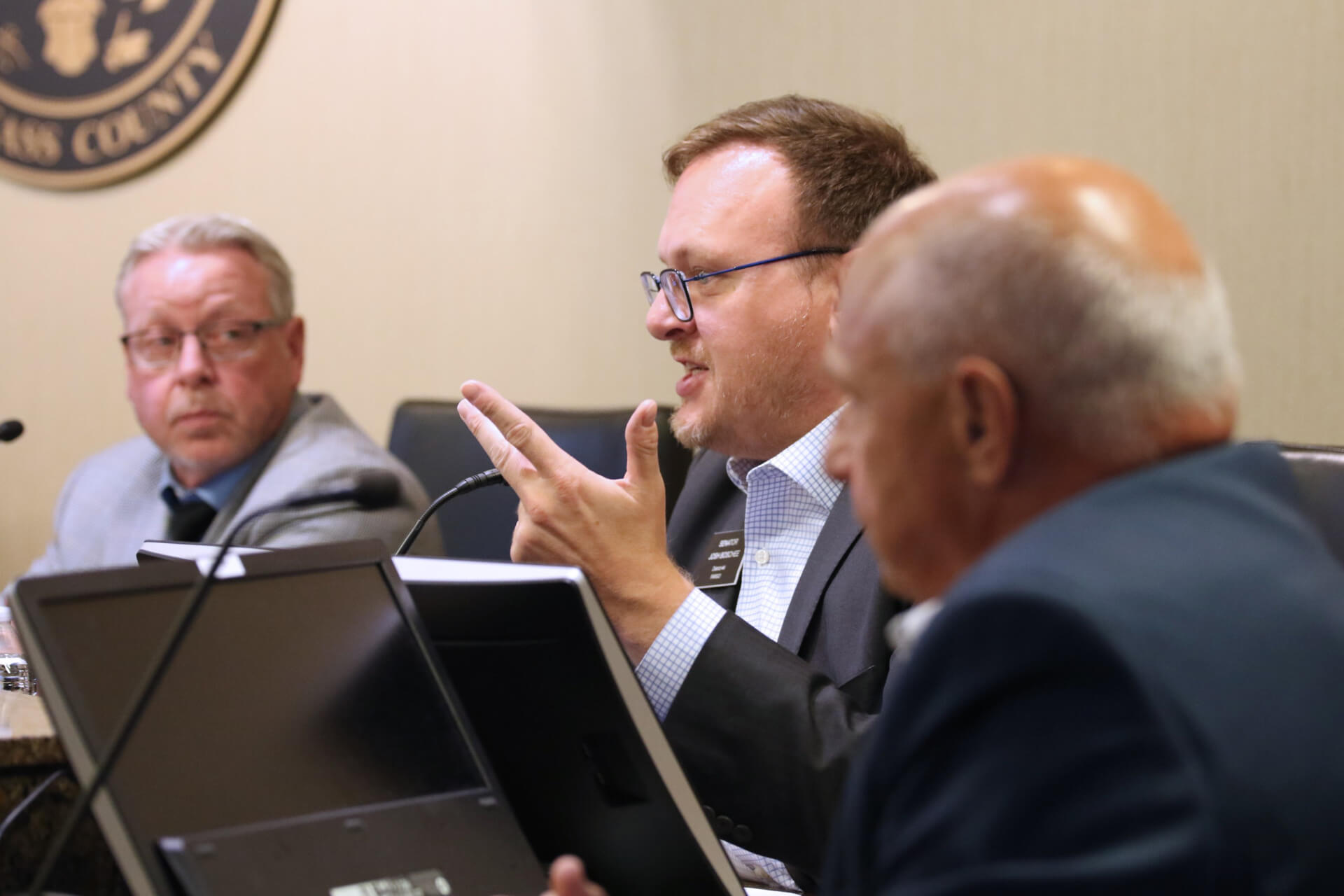Blog Navigation: Business Insights and Spotlights | Chamber Blog
07.24.25
Inside the North Dakota Legislature: What Businesses Need to Know from the 2025 Session
By Cale Dunwoody, Vice President of Public Policy, FMWF Chamber

Legislators speak to business and community leaders during a panel discussion recapping the 2025 North Dakota Legislative Session, hosted by The Chamber.
Discover key takeaways from the 2025 North Dakota Legislative Session. Here's what passed, what it means for business and how to stay engaged moving forward.
The 2025 North Dakota legislative session is over. Now, the dust settles.
The Chamber recently gathered business and community leaders to hear insights from six Cass County legislators: Rep. Steve Swiontek (District 10), Rep. Brandy Pyle (District 22), Sen. Kristin Roers (District 27), Rep. Greg Stemen (District 27), Sen. Josh Boschee (District 44) and Sen. Ron Sorvaag (District 45). They outlined the major outcomes of the session and what those decisions mean for North Dakota’s business climate and economic future.
Whether you're running a business, managing a city budget or addressing workforce challenges, here’s a clear breakdown of what happened and why it matters.
State Budget Snapshot: What’s Being Funded and Why It Matters
North Dakota passed an approximately $20 Billion budget for the 2026-2027 biennium, which is a 3.5 percent increase from the previous budget cycle.
Why that’s important:
- Budget relies heavily on oil revenue, so future stability depends on market prices
- About $5.4 Billion of that is going straight to local entities like schools, counties, cities and townships for local projects, services and infrastructure.
What you can do:
- Ask local leaders what this means for your community
- Share your business’s priorities with legislators during the interim period
Property Tax Relief and Local Budget Limits
HB 1176 passed, providing up to $1,600 in a primary resident tax credit for homeowners. At the same time, political subdivisions like counties, cities, school districts and park districts will now be capped at a 3 percent increase per year on local property tax rates.
If they don’t utilize the full 3 percent increase, they can carry over the remaining percentage into any of their budgets over the next five years. Additionally, voters can also choose to remove the limit for four years. That would let the local government raise taxes above the 3 percent cap during that time.
What this could mean:
- Tax relief for homeowners
- Budget challenges for local governments
Be On the Lookout:
- Recommended adjustments may be proposed by the interim Tax Reform and Relief Advisory Committee
How you can engage:
- Attend public budget discussions
- Share your feedback with local and state leaders
Workforce and Child Care Solutions in Progress
North Dakota has more than 20,000 job openings. Lawmakers responded with continued support for:
- Operation Intern
- Technical Skills Training Grants
- Regional Workforce Impact Program
- Career Academies for students
They also introduced a new employer tax credit to support child care. This incentive is designed to ease the burden of child care costs by encouraging businesses to contribute to the availability and affordability of care for their workforce. By offsetting expenses, the credit aims to make it more feasible for parents to enter or remain in the workforce.
Legislators emphasized that workforce remains a top priority for the state. While key programs are funded and active, their success will rely heavily on strong public-private partnerships, local engagement and consistent accountability to ensure they meet employer needs.
What you can do:
- Learn more about the state’s program to reduce the cost of child care
- Early Childhood Services for Providers
- Early Childhood Services for Families
- North Dakota Working Parents Child Care Relief
- Connect with education partners or the ND Dept. of Commerce on internships or apprenticeships
Housing and Homelessness Conversations
Housing was a major theme this session, with legislators putting dollars toward:
- Housing Incentive Fund ($25 Million)
- Homelessness grants ($10 Million)
Also proposed this session was funding for a Diversion and Deflection Center in Fargo, to provide homeless individuals with access to resources and services to help them get into stable living environments. Although the center did not receive funding this session, discussions around addressing homelessness across the state will continue.
You can:
- Explore programs through ND Housing Finance Agency
- Support local initiatives and programs focused on housing such as the FM Coalition to End Homelessness, the Fargo Homeless Shelter and more.
Infrastructure and Energy Investments
Three big wins to know about:
- $205 million for the Red River Valley Water Supply Project to develop a reliable supply of water to Central and Eastern North Dakota.
- $45 million toward Hector International Airport expansion to support growth in travel and logistics capacity.
- Funding for the development of a natural gas pipeline from western to eastern North Dakota, aimed to encourage continued oil production and economic development.
Action step: If infrastructure plays a role in your business, stay informed and speak up when project decisions affect you.
What’s Next for North Dakota and The Chamber?
The legislative session shaped the framework, but much of the real work will happen between now and 2027.
Next-phase focus areas:
- Revisiting tax policy
- Rolling out workforce and child care programs
- Measuring impact of housing and infrastructure funding
The Chamber is your partner in staying informed and speaking up. Let us know what matters most to you so we can advocate with purpose.
Have a question or insight to share?
Sign up for our advocacy updates, explore upcoming events or connect with our policy team to make your voice heard.
SHARE
More Stories
Upcoming Events
Subscribe to email newsletters
